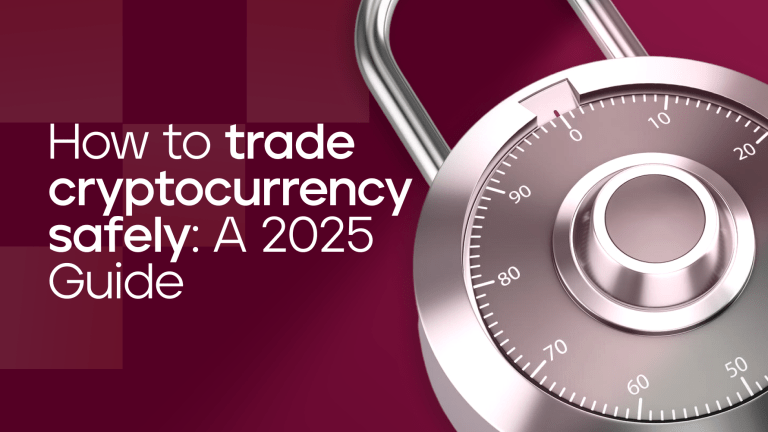
USDT (Tether) Explained: The Digital Crypto Dollar in 2025
In the volatile world of crypto, USDT is built different. Tether (USDT) is a digital asset that doesn’t swing wildly like Bitcoin or Ethereum. Instead, it’s steady. If you are new to crypto, this is a post on all you need to know about USDT.
What is USDT, and why does it matter in the crypto economy?
USDT, or Tether, is the world’s most widely used stablecoin, a type of cryptocurrency designed to maintain a stable value by being pegged 1:1 to the US dollar.
As of May 2025, Tether’s market capitalization exceeds $150 billion, making it the third-largest cryptocurrency behind Bitcoin and Ethereum by market cap, but it’s first in daily trading volume.
Unlike traditional cryptocurrencies known for volatility, USDT is designed to offer price stability, making it a cornerstone for traders, investors, and individuals in unstable economies seeking refuge from inflation.
How Does USDT Work?
USDT maintains its dollar peg through a mechanism known as collateralization. For every token issued, Tether Ltd. claims to hold an equivalent amount of assets in reserve, typically U.S. Treasury bills, cash, or other cash-equivalent assets.
These reserves are now audited quarterly and broken down in transparency reports; this development builds user trust following past criticisms.
USDT is issued on multiple blockchains, including:
- Ethereum (ERC-20)
- Tron (TRC-20) accounts for over 70% of USDT in circulation
- Solana, Avalanche, and Polygon for faster and cheaper transactions
This multi-chain flexibility gives users wider access to stable-value transactions across decentralized finance (DeFi), exchanges, and remittance platforms.
Why Is USDT So Widely Used?
1. Liquidity and Trading Efficiency
Traders rely on USDT as a guard against crypto volatility. On exchanges, USDT acts as a quote currency (like USD in forex), allowing traders to quickly move in and out of positions without converting back to fiat.
2. Cross-Border Remittances
In emerging markets such as Nigeria, Turkey, and Venezuela, USDT is used as a digital dollar for remittances. It’s faster and cheaper than Western Union and more stable than local currencies.
In the first half of 2024, stablecoins settled over $2.6 trillion in transactions, highlighting their growing adoption in various financial activities, including remittances.
Read: Stablecoins: The emerging market story
3. Access to DeFi Protocols
USDT is deeply integrated into DeFi ecosystems such as Aave, Curve, and Compound, where users lend, borrow, or stake USDT to earn yield or secure collateralized loans.
USDT vs USD: What’s the Difference?
While USDT is designed to mimic the U.S. Dollar, it’s important to understand that it is not legal tender. Instead, it is a blockchain-based representation of the dollar, issued by a private entity (Tether Ltd.), and used primarily within crypto markets.
| Feature | USDT | USD |
| Nature | Cryptocurrency | Fiat currency |
| Issued By | Tether Ltd. (Private) | U.S. Federal Reserve |
| Use Case | Digital trading, remittance | Legal transactions, reserves |
| Stability Mechanism | Asset-backed reserves | Central bank policy |
USDC vs USDT: All You Need To Know
Is Tether (USDT) Safe? Transparency and Regulation
For years, Tether was criticised for lacking transparency around its reserves. However, in response to regulatory pressure and public scrutiny, the company now publishes attestation reports verified by independent accounting firms.
As of the 1st quarter of 2025, Tether’s reserve composition is as follows:
- U.S. Treasury Bills: Approximately 81.5% of Tether’s total reserves are held in U.S. Treasury bills, amounting to $98.5 billion in direct holdings.
- Secured Loans and Other Cash Equivalents: Tether holds $8.8 billion in secured loans and $6.3 billion in money market funds, which are part of its cash equivalents.
- Bitcoin and Other Digital Assets: Tether’s holdings include $7.6 billion in Bitcoin and $4.4 billion in other investments.
Check AInvest for a deep dive into the in-depth analysis on Tether
Note though, Tether is not decentralized. If regulators intervene, or if trust in the company is compromised, USDT could lose its peg; this has never happened in a sustained way, though.
Is Tether Replacing the Dollar in Emerging Economies?
In countries grappling with hyperinflation and stringent currency controls, Tether (USDT) has emerged as a digital stand-in for the U.S. dollar.
In Nigeria, stablecoins like USDT are increasingly used to preserve wealth and help international transactions amid economic instability.
According to Chainalysis, stablecoins now account for approximately 40% of Sub-Saharan Africa’s total cryptocurrency transaction volume, underscoring their growing role in the region’s financial ecosystem.
This trend highlights the increasing reliance on stablecoins like USDT in emerging markets, where they serve as vital tools for economic resilience and global financial connectivity.
The Future of USDT in 2025 and Beyond
Tether’s (USDT) dominance shows no signs of slowing, but it may face increased regulatory competition from
- Central Bank Digital Currencies (CBDCs)
- Regulated stablecoins like USDC or PYUSD
- Decentralized algorithmic stablecoins
Despite this, USDT remains the default currency of the crypto world used to trade, store, send, and settle value across borders.
Its strength lies in its network effect, deep liquidity, and high utility, making it a critical piece of the digital finance infrastructure.
How to Sell USDT on Dtunes
If you would like to sell USDT in Nigeria. It’s best to look for a trusted platform to sell on. Dtunes is the best platform to sell USDT in Nigeria.
The following are the steps to sell USDT in Nigeria on Dtunes
- Download the Dtunes app from Google store or app store.
- Sign up using your email and create a strong password.
- Add your bank details and set up a secure PIN.
- Tap “Trade Crypto” from the app dashboard.
- Select USDT as the coin to sell.
- Enter the amount you want to convert.
- Copy the wallet address and send your USDT.
- Wait for confirmation.
- Receive Naira in your Dtunes wallet.
- Withdraw naira straight to your bank account.
Final Thoughts: Should You Use USDT?
If you’re a crypto beginner, USDT is often the easiest way to enter the space without worrying about price swings. For experienced users, it remains the most liquid and integrated stablecoin in the market.
Check More on Dtunes
- How to Sell Tron (TRX) in Nigeria
- How to Sell Bitcoin Cash (BCH) in Nigeria: The Expert’s Guide
- How to sell USDT TRC-20 in Nigeria
- How to Sell Litecoin For Cash In Nigeria
- What is Ethereum, Smart Contracts, Gas Fees, Mining & Use Cases
- How to Sell Ethereum In Nigeria At The Best Rate
- How to Make Money with Crypto Without Trading
- 10 Factors for Choosing the Best Crypto Wallet in Nigeria
- The Best Prestmit Alternative to Sell Bitcoin in Nigeria
- 5 P2P Apps to Sell USDT in Nigeria Fast
- Dtunes: Best app to sell USDT in Nigeria
Frequently Asked Questions (FAQs)
1. What is USDT used for?
USDT, a stablecoin pegged to the US dollar, is primarily used as a medium of exchange, store of value, and for liquidity support in the cryptocurrency market. It’s also utilized for various other purposes, including payments, investment, and decentralized finance (DeFi).
2. How much is 1 USDT to 1 Naira?
As of May 2025, 1 USDT = NGN 1,596
3. What is the difference between USDT and Tether?
USDT is the symbol for Tether, a cryptocurrency that is pegged to the U.S. dollar. This means USDT is a stablecoin, fluctuating in value with the U.S. dollar and backed by Tether’s dollar reserves.
4. What is the full meaning of USDT?
United States Department of the Treasury
Godwin has spent the last 5 years making SEO magic happen and now leads as SEO Manager at Dtunes. When he’s not tweaking search rankings, you’ll catch him vibing to music, playing games, or hanging out with friends.




